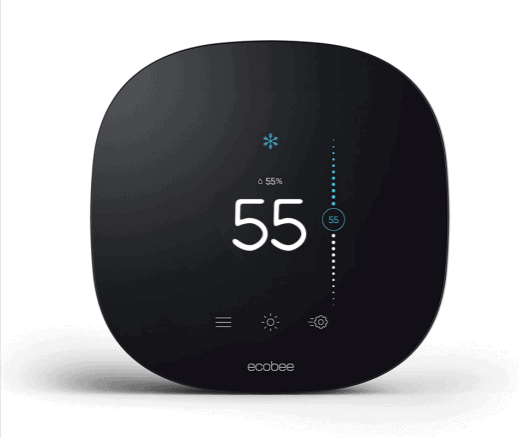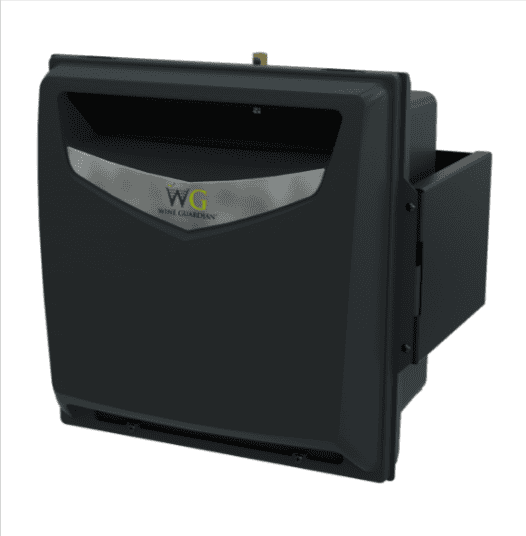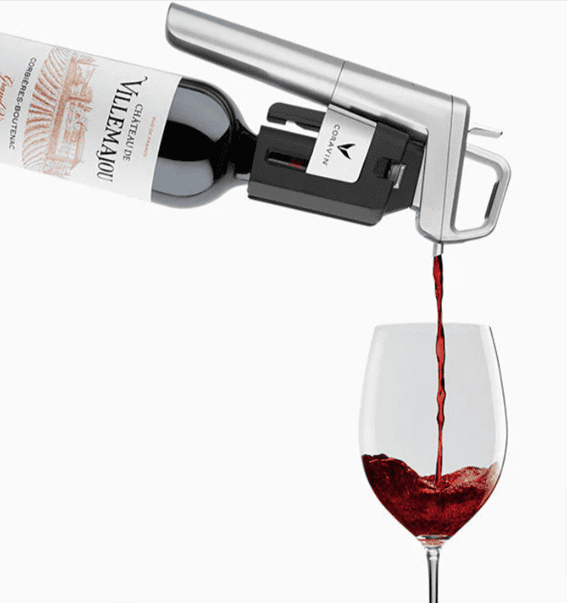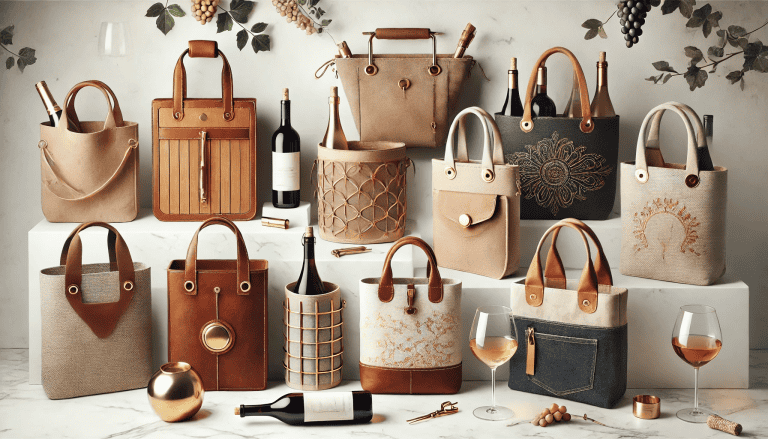Picture this: You’re standing in your wine cellar, surrounded by bottles of exquisite vintages, each telling a story of terroir and time. But wait! Are you equipped with the right tools to preserve and enjoy these liquid treasures?
Did you know that proper wine storage can increase the value of your collection by up to 20%? Whether you’re a seasoned sommelier or a budding enthusiast, having all essential wine cellar accessories aboard can make a big difference in your wine journey.
Let’s uncork the secrets to a well-equipped cellar and explore the must-have gadgets that’ll take your wine game to the next level!
Welcome to Didi Somm and Cheers!
Important Notice: The information in this article is for general and public information purposes only. It solely reflects Didi Somm’s or his Staff’s opinion, and no responsibility can be assumed for errors or omissions in the service’s contents. For details, please check the Disclaimer at the bottom of the homepage.

Key Takeaways
- Temperature control is crucial for wine preservation
- Proper humidity levels prevent cork damage and label deterioration
- Organizing tools enhance efficiency and showcase your collection
- Serving accessories elevate the tasting experience
- Regular maintenance ensures longevity of both wine and cellar
1. Temperature Control Systems: The Heart of Your Cellar
Let me tell you, when I first started collecting wine, I had no clue how crucial temperature control was. I cringe thinking about those early days when I stored my precious bottles in a closet that fluctuated between sweltering and freezing. Talk about a rookie mistake! It wasn’t until I lost a whole case of my favorite Bordeaux to heat damage that I got serious about cellar cooling.
These days, I swear by my split system cooling unit. It’s a game-changer, folks. I’ve tried the through-the-wall units too, but for my space, the split system just works better. It keeps my cellar at a constant 55°F, which is perfect for aging most wines. And let me tell you, the peace of mind is worth every penny.
But here’s a pro tip: don’t skimp on the smart thermostat. Being able to check and adjust my cellar temp from my phone? Absolute lifesaver. I remember panicking on vacation once, thinking I’d left the cooling off. Turns out, everything was fine, but being able to double-check remotely was priceless.
Oh, and don’t forget about backup power. Trust me, you do not want to lose your cooling during a heatwave. I learned that lesson the hard way during a summer blackout. Now I’ve got a generator that kicks in automatically if the power goes out. It’s like insurance for your liquid investments!
2. Humidity Regulators: Keeping Corks and Labels in Prime Condition
Okay, let’s talk humidity – the unsung hero of wine storage. I used to think temperature was all that mattered, but boy, was I wrong. My wake-up call came when I noticed some of my prized bottles had shriveled corks and peeling labels. Not a good look, especially when you’re trying to impress fellow wine nerds!
So, what’s the magic number for humidity? Aim for 50-70%. Too low, and your corks dry out, letting air seep in and spoil the wine. Too high, and you’re inviting mold to the party. Trust me, moldy labels are not a good look (or smell).
Now, whether you need a humidifier or dehumidifier depends on your climate. I live in a pretty dry area, so I rock a humidifier. But if you’re in a damp place, you might need to dehumidify. Either way, get yourself a good hygrometer. It’s like a humidity watchdog – keeps you in the know without the guesswork.
And here’s a neat trick I’ve picked up: if you’re just starting out or on a budget, try some DIY humidity solutions. A tray of water or some damp terracotta bricks can work wonders in a pinch. Just keep an eye on things and adjust as needed. Your wines will thank you!
3. Wine Racks: Stylish Storage Solutions
Alright, let’s chat about wine racks – the unsung heroes of any cellar. When I first started out, I just stacked my bottles in cardboard boxes. Big mistake! Not only did it look messy, but I couldn’t even see what I had. Plus, I may have accidentally played wine bottle Jenga a few times. Not recommended!
My personal Tip: To get started, check the Wine Racks America website for information and inspiration.
These days, I’m all about the right rack for the right space. I’ve got a mix of wood and metal racks, and let me tell you, they’re not just functional – they’re downright sexy. The wooden ones give that classic, rustic vibe, while the metal ones are sleek and modern. And don’t even get me started on acrylic racks – they’re like invisible wine magic!
Now, here’s a pro tip: if you’re serious about your collection, consider custom racking. Yeah, it’s a bit pricier, but it’s worth every penny. I had mine designed to fit those awkward corners in my cellar, and now I can store twice as many bottles. Talk about a win!
Oh, and don’t forget about those big boys – magnums and larger bottles need love too. I learned this the hard way when I tried to cram a magnum into a standard rack. Let’s just say it didn’t end well. Now I’ve got specialty racks for the big bottles, and they’re like the star players in my cellar lineup. Trust me, your oversized bottles will thank you!

4. Lighting: Illuminating Your Collection
Let’s shed some light on the subject – cellar lighting, that is! I remember when I first set up my cellar, I thought any old light bulb would do. Boy, was I wrong! I ended up with a hot, bright mess that was doing more harm than good to my precious vino.
LED Lighting
These days, I’m all about LED lighting. It’s like the superhero of cellar illumination – cool, energy-efficient, and it makes your bottles look amazing. Plus, it won’t cook your wine like those old incandescent bulbs. Trust me, nobody wants to drink cooked Cabernet!
Motion-Activated Lights & Accent Lighting
Now, here’s a game-changer: motion-activated lights. I installed these bad boys a couple years ago, and it’s like having a personal cellar butler. No more fumbling for switches or leaving lights on by accident. They kick on when I enter and shut off when I leave. It’s pretty sweet, and my energy bill has never looked better.
But let’s talk about showing off, because let’s face it – half the fun of a wine cellar is impressing your friends. Accent lighting is where it’s at. I’ve got some subtle spotlights on my prized bottles, and let me tell you, it makes them look like liquid gold. Just be sure to use UV-protective fixtures. You want to showcase your wine, not age it prematurely!
5. Inventory Management Tools: Keeping Track of Your Treasures
Alright, let’s talk about keeping tabs on your liquid gold. Back in the day, I used to think I could remember every bottle in my collection. Ha! That lasted until I hit about 50 bottles. Then it was like trying to remember every grain of sand on a beach. Not. Gonna. Happen.
These days, I’m all about digital inventory apps. It’s like having a personal sommelier in your pocket. I can scan labels, track what I’ve drunk, and even get suggestions for what to open next. It’s pretty sweet, especially when I’m standing in the wine shop trying to remember if I already have that killer Syrah.
Now, for you tech-savvy folks, barcode scanners are a game-changer. I picked one up last year, and wow – cataloging new bottles is now faster than uncorking them! Just a quick beep, and boom – it’s in the system. No more typos or “was that a 2015 or 2016?” moments.
But hey, if you’re old school (no judgment!), there’s nothing wrong with a good ol’ spreadsheet or printable inventory sheet. I still keep a physical backup, just in case my phone decides to take a swim or something. Plus, there’s something satisfying about checking off bottles by hand. It’s like a wine lover’s version of a treasure map!
6. Decanting Stations: Aeration in Style
Let’s chat about decanting, shall we? I used to think it was just for show-offs and wine snobs. Boy, was I wrong! My aha moment came when I compared a decanted vs. non-decanted bottle of young Cabernet. The difference was like night and day!
Now, I’m all about that decanter life. I’ve got a few different types – a swan neck for those elegant dinner parties, a wide base for maximum aeration, and even an aerating decanter for when I’m feeling impatient (which, let’s be honest, is pretty often). Each one has its moment to shine.
But here’s a pro tip: invest in a good decanting cradle. Trust me, you do not want to be the person who dumps a $100 bottle of wine all over the table because your hand slipped. Been there, done that, got the red-stained tablecloth to prove it. A cradle keeps things steady and looks pretty darn classy too.
Oh, and don’t forget about cleaning! Nothing ruins a good decanter faster than leftover wine residue. I learned this the hard way when I left a decanter “to soak” overnight and ended up with a cloudy mess. Now I use cleaning beads and a specialized brush. It takes a bit more effort, but my decanters sparkle like new every time. Your wine (and your guests) will thank you!
7. Wine Preservation Systems: Savoring Every Last Drop
Okay, let’s talk about the heartbreak of wasted wine. You know that feeling when you open a bottle, have a glass, and then watch the rest slowly turn to vinegar over the next few days? Yeah, been there, cried over that. But fear not, fellow wine lovers – I’ve learned a thing or two about preservation!
First up, let’s chat about the Coravin. This gadget is like magic for wine collectors. It lets you sample a glass without even pulling the cork! I was skeptical at first, but after trying it on a prized Bordeaux and coming back months later to find it still perfect? I’m a believer. It’s pricey, sure, but for those special bottles, it’s worth every penny.
Now, for everyday use, I swear by vacuum pumps. They’re simple, affordable, and they work. Just pump out the air, and your opened wine will stay fresh for days longer. I’ve even done side-by-side tests, and the difference is noticeable. Plus, it’s kinda fun to use – like giving your wine bottle a little workout!
For the tech-savvy among us, there are some cool inert gas systems out there. They replace the air in the bottle with argon or nitrogen, which doesn’t react with the wine. Fancy, right? I splurged on one last year, and while it’s not necessary for every bottle, it’s great for those times when you want just a taste of something special.
And hey, for short-term storage (like when you accidentally open two bottles for dinner), don’t underestimate a good quality wine stopper. I keep a bunch of these around – they’re perfect for those “oops, I opened too much” moments. Because let’s face it, those happen more often than we’d like to admit!
8. Glassware Storage: Protecting Your Stemware
Let’s talk about storing those precious wine glasses, shall we? I learned the hard way that proper storage is crucial. Remember that time I stacked my Riedel glasses in the cabinet? Yeah, ended up with a bunch of chipped rims and a very sad bank account. Never again!
These days, I’m all about hanging racks. They’re space-efficient and keep those delicate stems safe. Plus, I gotta admit, there’s something pretty cool about walking into my kitchen and seeing all my glasses hanging there like crystal chandeliers. It’s like stemware art!
But if you’re short on hanging space, don’t worry. I’ve also got some standing storage in my dining room. The key is to get a cabinet with adjustable shelves. Trust me, you’ll appreciate this when you’re trying to fit that oversized Burgundy glass next to your dainty Champagne flutes.
Now, let’s chat about the enemy of all wine glasses: dust. Ugh. I used to spend way too much time polishing before dinner parties. Then I discovered the magic of dust-free cabinets. Game changer! They keep your glasses sparkling clean and ready for action. Worth every penny, if you ask me.
Oh, and here’s a pro tip: invest in some good stemware washing accessories. A gentle brush and a microfiber cloth are must-haves. And please, for the love of all things grape, avoid the dishwasher! I know it’s tempting, but hand washing is the way to go. Your glasses will last longer and stay crystal clear.
Lastly, don’t forget about travel cases if you’re the type to bring your own glasses to events (no judgment, I’ve totally done it). They’re like little cushioned houses for your glasses. Because nothing ruins a picnic faster than broken glass!
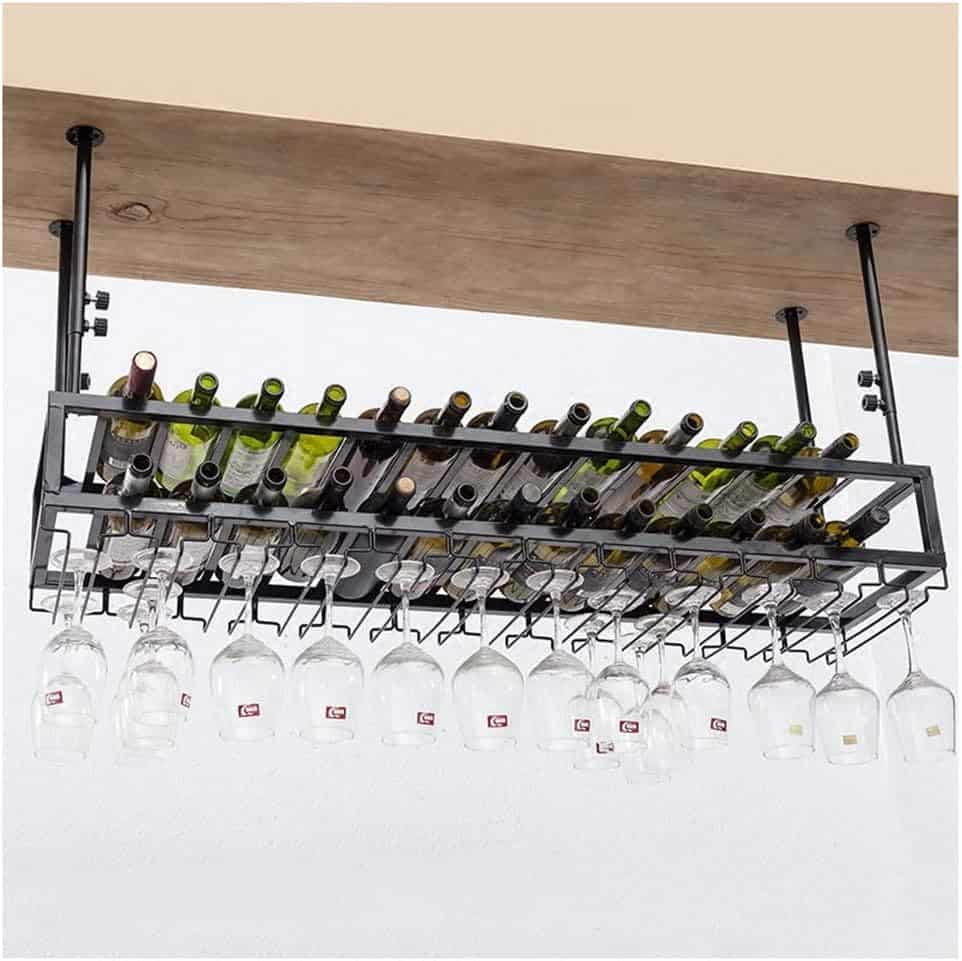
9. Tasting Essentials: Tools for the Connoisseur
Alright, wine lovers, let’s dive into the world of tasting tools! Trust me, having the right gear can take your wine experience from “meh” to “magnificent.” I learned this the hard way when I tried to open a prized bottle with a cheap corkscrew and ended up with cork bits floating in my glass. Not exactly the sophisticated evening I had planned!
First things first: invest in a good corkscrew. I’m talking professional-grade here. My go-to is a double-hinged waiter’s friend. It’s reliable, portable, and makes me feel like a sommelier every time I use it. And don’t forget a foil cutter – it’s like the corkscrew’s trusty sidekick.

Now, let’s talk temperature. I used to just guess if my wine was “cold enough” or “room temperature.” Big mistake! I picked up a wine thermometer a few years back, and it’s been a game-changer. Did you know that serving temperatures can make or break a wine? Reds at 60-65°F, whites at 45-50°F – it makes a world of difference!
For you serious tasters out there, get yourself a tasting notebook and an aroma wheel. I resisted for years, thinking I could remember everything. Spoiler alert: I couldn’t. Now I jot down notes for every new wine I try. It’s like a personal wine journey, and it’s super helpful when I’m trying to remember that amazing Syrah I had last month.
And finally, let’s not forget the less glamorous but oh-so-necessary tools: spittoons and palate cleansers. Yeah, I know, spitting out good wine feels wrong. But trust me, if you’re doing a serious tasting, you’ll thank me later. And keep some plain crackers or bread on hand to reset your taste buds between wines. Your palate (and your head the next morning) will thank you!
10. Maintenance Supplies: Keeping Your Cellar Pristine
Let’s get down and dirty with cellar maintenance, folks! I used to think that once I set up my cellar, it would take care of itself. Ha! Rookie mistake. Turns out, keeping your wine sanctuary clean is just as important as what you put in it.
First up: cleaning products. Don’t just grab any old household cleaner! I learned this the hard way when I used a strong-smelling cleaner and ended up with a cellar that reeked of fake lemon for weeks. Now I use specialized, odorless cleaners for my racks and floors. They keep things spotless without interfering with that delicate cellar aroma.
Now, let’s talk about the dreaded M-word: mold. It’s like the boogeyman of wine cellars. I once found a fuzzy patch growing behind a rack and nearly had a heart attack! These days, I’m proactive with mold prevention solutions. A little spray here and there keeps those spores at bay. Trust me, it’s way easier to prevent mold than to deal with an infestation.
Odor control is another biggie. You want your cellar to smell like, well, a cellar – not like last week’s forgotten leftovers. I invested in a good air purifier, and it’s been a game-changer. It keeps the air fresh and clean, which is crucial for both your wines and your nose!
Lastly, don’t forget about those precious labels! I used to think they were indestructible, but humidity and time can do a number on them. I now keep label removers and preservers on hand. They’re great for salvaging damaged labels or keeping your collection looking pristine. Plus, it’s pretty satisfying to restore a label to its former glory. It’s like a mini restoration project each time!
Remember, a clean cellar is a happy cellar. And happy cellars make for very happy wine collectors!
FAQ – Essential Wine Cellar Accessories
- Q: What’s the ideal temperature for a wine cellar? A: The ideal temperature range is between 55°F to 59°F (13°C to 15°C) for long-term storage of most wines.
- Q: How often should I check my cellar’s humidity levels? A: It’s best to check humidity levels at least once a week, aiming for a range between 50% to 70%.
- Q: Can I use regular household lighting in my wine cellar? A: It’s not recommended. Use LED lights with low heat emission and UV protection to prevent damage to your wines.
- Q: What’s the best way to organize wines in a cellar? A: Organize by region, varietal, or vintage, and use a digital inventory system for easy tracking.
- Q: How long can I keep an opened bottle of wine? A: With proper preservation methods, most wines can last 3-5 days after opening.
- Q: Are wooden or metal wine racks better? A: Both have pros and cons. Wood is traditional and absorbs vibration, while metal is durable and often more space-efficient.
- Q: Do I really need a decanter? A: Decanters are beneficial for aerating young wines and separating sediment in older vintages, enhancing the tasting experience.
- Q: How often should I clean my wine cellar? A: Perform a thorough cleaning every 3-6 months, with regular dusting and spot-cleaning as needed.
- Q: Can I store other items in my wine cellar? A: It’s best to avoid storing food or strong-smelling items that could affect the wine. Stick to wine and wine-related accessories.
- Q: What’s the purpose of a Coravin system? A: A Coravin allows you to sample wine without removing the cork, preserving the remaining wine for future enjoyment.
- Q: How important is a backup power system for my cellar? A: Very important, especially for larger collections. It ensures consistent temperature during power outages, protecting your investment.
- Q: Should I keep my wines in their original boxes? A: While boxes can protect from light, removing them allows for better air circulation and easier access to your bottles.
- Q: How do I choose the right size cooling unit for my cellar? A: Consider the cellar’s size, insulation, and ambient temperature. It’s best to consult with a professional for accurate sizing.
- Q: Are UV-resistant cellar doors necessary? A: Yes, they help maintain temperature and protect your wines from harmful UV rays, especially if your cellar has any external exposure.
- Q: How can I prevent label damage in a humid cellar? A: Use label protectors or sleeves, and ensure proper air circulation to prevent excessive moisture buildup on bottle surfaces.
Conclusion
Equipping your wine cellar with these top 10 accessories isn’t just about having the latest gadgets—it’s about creating the perfect environment for your liquid investments to thrive.
From the essential temperature control systems to the finishing touches of proper glassware storage, each element plays a crucial role in preserving and enhancing your wine collection.
Remember, a well-appointed cellar not only protects your wines but also elevates the entire tasting experience. So, why wait? Start upgrading your cellar today and watch as your passion for wine reaches new heights.
Cheers to the perfect pour every time!
For your reference, the latest articles by Didi Somm include:
- Best Home Wine Cellar Cooling Systems in 2024: 5 Expert Tips
- How to Maintain Proper Wine Cellar Ventilation: Best Expert Tips
- Best Wine Cellar Doors: Balancing Design and Functionality
- The Best Wine Racks for Home Cellars: A Comprehensive Guide
- 5 Best Wine Cellar Flooring Options: Our Expert Guide
- Best Wine Cellar Cooling Units For Your Home in 2024: Expert Report
Important Notice: The information in this article is for general and public information purposes only. It solely reflects Didi Somm’s or his Staff’s opinion, and no responsibility can be assumed for errors or omissions in the service’s contents. For details, please check the Disclaimer at the bottom of the homepage.

